
With his passing last week at the age of 94, Burt Bacharach has been on my mind almost constantly. I’ve been obsessed with his music almost as long as I was aware of what was coming out of our family’s AM radio in the early 1960’s. I’ve always maintained that the music we hear in our early formative years – say ages 10 to 14 – gets indelibly stamped in our psyches. It becomes the bed that everything we like and discover throughout our long listening lives, rests on. We may branch out, and discover new, exciting sounds, songs and artists along the way, but those early favorites always maintain a hold on us, a deep source of comfort, and a place to return to over and over again as we grow and age.
I remember seeing a Leonard Bernstein special on TV in the late-60’s where he talked about a composer’s “musical voice,” a concept that was new to me. He wasn’t talking about a singing voice, or even the way someone played an instrument; he was talking about composition. He explained that the great composers all had a unique musical voice. The way they constructed a melody, the rhythm and – especially – the chord changes they used underneath those melodies and rhythm, was a very specific product of their individual musical DNA. I’m sure he played some examples to display the evidence of his theory, but to be honest, I don’t recall them. But the concept of a “musical voice” embedded deeply in my soul.
As a songwriter myself, AND a voracious, lifelong record collector, I was always someone who looked at the songwriting credits on the record label to see who created the magical sounds I was listening to. With bands like the Beatles and the Beach Boys, it was usually members of the band that were listed, but in numerous other singles of the era, there were songwriting teams – usually two names, sometimes more – that were then foreign to me. It seemed amazing to me that so many of the records I loved had names on them like, Goffin & King, Barry & Greenwich, Mann & Weill, Holland, Dozier & Holland, and Bacharach & David.
Brill Building songwriters (l-r): Cynthia Weill, Carole King, Barry Mann & Gerry Goffin
I tried to learn everything I could about who these people were. But more importantly, I began to understand Bernstein’s concept of a musical voice. Whether it was a girl group record, or something by Bobby Vee or the Drifters, I could “hear” Carole King’s musical voice; a melodic interval, a surprising chord change, and maybe an unexpected key change near the end, that were all hallmarks of her style.
I made similar inroads with the other writing teams I previously mentioned; all wonderful. And then there was Burt Bacharach.
When I was on this songwriters-as-artists quest in the 60’s and 70’s, there was no internet, no Wikipedia that collected all of the world’s information in one place, making it so easy to access. I had to dig. I started going through every 45 I owned, checking for songwriting credits, making lists, and listening to hear the composer, and not just the singer.
My older brother Bob had a great collection of 45s, accrued through swapping lunch items on his school bus, with a girl whose Dad owned a diner with a jukebox. Our Mom’s homemade cookies became a yellow Sun single by Jerry Lewis, or a Cadence Records copy of “Bye Bye Love” by the Everly Brothers. With little disposable income, he compiled an impressive collection of singles that I, six years younger, devoured like a starving child.
It seemed like the names Bacharach & David were on so many of my favorite records by artist like Gene Pitney, The Shirelles, Gene McDaniels, Sandie Shaw, Jackie DeShannon and, of course, Dionne Warwick. I even saw his name on my Introducing The Beatles album, for their version of “Baby It’s You.” After seeing the Bernstein TV special, I finally understood what tied all of those disparate artists together for me; it was Bacharach’s melodies and chords. No matter who was singing it, or playing it, there was something recognizable about a Bacharach composition that I began to key in on. I became obsessed.
I started combing through every record I owned, and through friends collections, looking for the names Bacharach & David. And it seemed like he was everywhere! On hit singles, b-sides and album cuts. In my quest, I uncovered dozens of songs I had always loved, but now knew they were written by this magical man, Burt Bacharach.
I started compiling my finds on Burt mix tapes. Songs by the 5th Dimension, Manfred Mann, Tom Jones, The Searchers, The Walker Brothers, Marty Robbins, Perry Como (?!), Dusty Springfield, B.J. Thomas; was there any artist who hadn’t covered a Bacharach/David song?! I listened to them over and over, marveling at the melodic intervals he invented, the unusual chord changes he used, and the broken rhythms that he somehow made seem smooth in the way he put it all together.
The music of Burt Bacharach has been a constant throughout my life. From “Walk On By” in 1962 (when I was 9 years old) to the most recent songs he wrote with Nashville songwriter/producer Daniel Tashian, released just last year, and nominated for a Grammy in the Best Traditional Pop Album category. Think about that; nominated for a Grammy for new music, written in his 90’s? That’s an achievement that is unprecedented.
What’s also unprecedented, is the sheer range of his career. He studied under the famous French modernist composer Darius Milhaud at McGill University in the 40’s (some of Milhaud’s other notable students included Dave Brubeck, Philip Glass and Karl Stockhausen), and he toured Europe in his late-20’s as the bandleader and conductor for the international screen legend, Marlene Dietrich.
But composition was always his main love, and that led him to New York City and the Brill Building, a songwriting factory of sorts where he eventually became paired with the great lyricist, Hal David. Teaming up with singer Dionne Warwick, the trio produced an amazing run of singles and albums from 1962 to 1971, and a catalog of remarkable songs that have been covered by over 1,000 different artists over the last six decades. Unbelievable!
After his association with Hal David ended in 1973, Bacharach found new partners and fresh challenges in every decade of his long, creative, life: Broadway shows, film scores, instrumental albums, appearances in films and concert tours all over the world. I was lucky enough to see him in concert twice; once in 2002 at the Showroom at Turning Stone Casino, and again at Embarcadero Park in San Diego (with a full orchestra) in 2013. To see him live, conducting the band or orchestra, playing piano, and singing (in his broken, but always-charming hoarse-sounding voice) is something I’ll never forget.
In his last three decades, Burt found new challenges, writing with Elvis Costello, Broadway lyricist Steven Slater (a wonderful new show, Some Lovers, that unfortunately never made it to Broadway) and Daniel Tashian, of the Silver Seas. And with every new partner there was one constant, that “musical voice” that Leonard Bernstein talked about. It never left him. No matter who he wrote with, you could instantly recognize his melodies and his adventurous chord changes.
Everybody knows the song “I’ll Never Fall In Love Again,” from his Broadway show, Promises, Promises, that was made into a hit record by – of course – Dionne Warwick, and reached the Top Ten in early-1970. Think of that melody in your mind, it’s just sublime. The shape, the intervalic leaps, the way it suggests the constantly-changing chords underneath; all the work of a musical savant.
He was the master of what I like to think of as the “intentional” melody; a melody that is constructed; as opposed to the more common “intuitive” melody, where the writer just sings along with the chords he’s playing and the melody takes form in a more organic way. Both can be great, but Bacharach kept alive that sense of an exquisitely-constructed melody that was a hallmark of the great American songwriters of the 20th century. Names like George Gershwin, Cole Porter, Richard Rogers, Harold Arlen, Jerome Kern and numerous others who contributed to what has come to be known as the Great American Songbook.
But when Burt began his remarkable career run of over 70 Top Forty hits, the music industry had radically changed into a more teen-based market. The fact that he was able to ply his throwback sense of melody and harmony into such phenomenal success in the world of 1960s AM radio is, again, unparalleled. Think about the icons and the sounds of sixties music; the Beatles, the Stones, the Beach Boys, Motown, Dylan, Hendrix, etc. Amid all those titans of the era, there was Burt, with multiple hit singles in every year of the decade. Amazing!
The music of Burt Bacharach is indelibly stamped in my psyche. My love of chord changes that I got from his songs led me to other musical mavericks like Brian Wilson, Paul McCartney, Jimmy Webb, Harry Nilsson, Carole King, Randy Newman, Thom Bell, Joni Mitchell, David Crosby, Todd Rundgren, Stevie Wonder, Rupert Holmes, Paddy McAloon, Eric Carmen, Van Dyke Parks; the list goes on and on, but it starts with Bacharach!
In 2015, I released an album called File Under Pop Vocal, that was my attempt to honor the songwriters I just mentioned, with the more harmonically-adventurous songs of my own catalog. One song, “You’re Only Hurting Yourself,” was my own attempt at writing a Bacharach song.
Another “It’s Your Heart,” written with the great Syracuse musician, Mark Doyle (his music, my lyrics) travelled the same road.
But whether I can come anywhere near a Bacharach song with my own writing isn’t really the point. No one can. It is more the fact that his music is so deeply-embedded in me that those kinds of chord changes and melodies just rise to the surface at times. And it’s something I truly cherish as my own personal tribute to greatest songwriter of my lifetime, and that unique musical voice.
Postscript: I’ve managed to pass on my love of Bacharach to my son Nick – also a musician – and in a rare 2018 duo gig at Sheraton University Inn in Syracuse, we attempted one of Burt’s most difficult songs, “God Give Me Strength,” from the movie Grace Of My Heart, written with, and sung in the film by, Elvis Costello. Not easy with acoustic guitar and bass (and a little flugelhorn), as the recording featured a full orchestra. But what it lacks in execution, it hopefully makes up for with true devotion.


















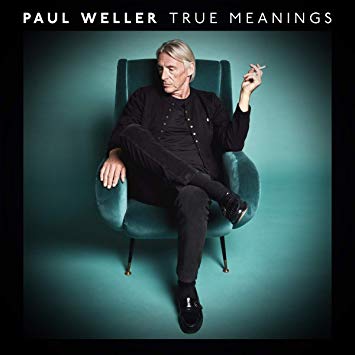

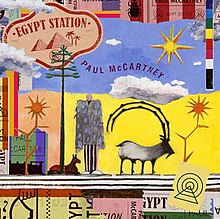 Any new release from the former-Beatle is cause for a celebration. And at 76, he is the lone surviving creator of all those great Beatles songs. He is also the most successful songwriter in the history of recorded music. So if anyone is entitled to rest on such lofty laurels, it would be McCartney. But as anyone who has followed his career knows, that’s just not the case. He tours constantly, collaborates with numerous younger artists (Killing Joke, Kanye West, Rhianna, Nirvana, etc) and is still motivated to write, record and release new music. Egypt Station is a remarkable set of songs, that range from the usual tuneful Macca pop (I Don’t Know, Happy With You & Hand In Hand), to raucous rock & roll (Come On To Me & Caesar Rock), and social commentary (Despite Repeated Warnings). His voice is a bit weathered on some tracks, but his sense of arrangement, and hook-making ability is completely intact. A strong effort from beginning to end!
Any new release from the former-Beatle is cause for a celebration. And at 76, he is the lone surviving creator of all those great Beatles songs. He is also the most successful songwriter in the history of recorded music. So if anyone is entitled to rest on such lofty laurels, it would be McCartney. But as anyone who has followed his career knows, that’s just not the case. He tours constantly, collaborates with numerous younger artists (Killing Joke, Kanye West, Rhianna, Nirvana, etc) and is still motivated to write, record and release new music. Egypt Station is a remarkable set of songs, that range from the usual tuneful Macca pop (I Don’t Know, Happy With You & Hand In Hand), to raucous rock & roll (Come On To Me & Caesar Rock), and social commentary (Despite Repeated Warnings). His voice is a bit weathered on some tracks, but his sense of arrangement, and hook-making ability is completely intact. A strong effort from beginning to end!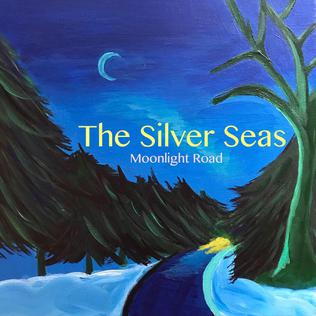 On their fifth long player, Nashville’s greatest pop band succeeds again with classic songwriting, inventive arrangements and unique production. Their sound this time around is a bit more synthetic than on their past records, but once you get used to it, the songs really win you over. Daniel Tashian has one of those voices I could listen to all day. That, combined with warm guitar sounds, ethereal keyboards, and
On their fifth long player, Nashville’s greatest pop band succeeds again with classic songwriting, inventive arrangements and unique production. Their sound this time around is a bit more synthetic than on their past records, but once you get used to it, the songs really win you over. Daniel Tashian has one of those voices I could listen to all day. That, combined with warm guitar sounds, ethereal keyboards, and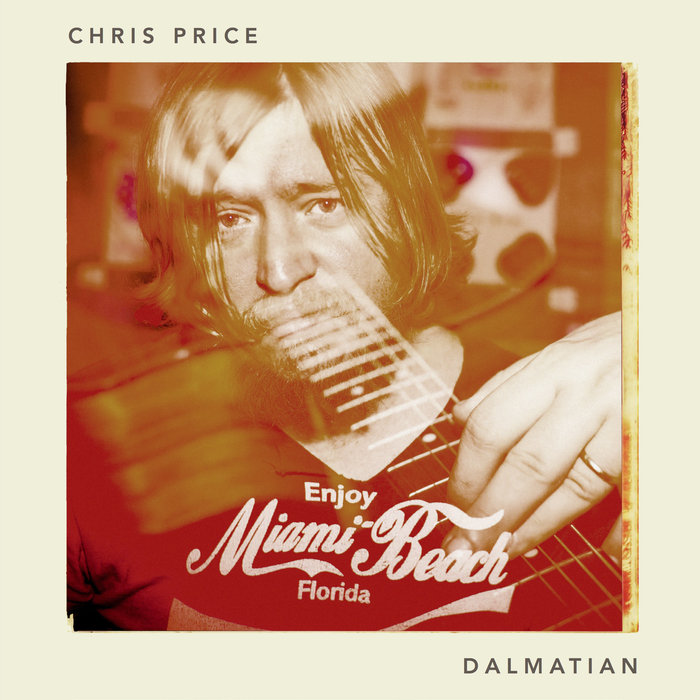 Price first appeared on my radar when he produced the stunning 2016 comeback album for pop legend, Emmit Rhodes, Rainbow Ends. Shortly after that, he released his second solo album, Stop Talking, which, if I’d done my top ten list last year, might’ve topped that list. His latest album, Dalmatian, is the work of a master pop craftsman, all written, engineered and produced by Price. While his gift for melody might be his strongest suit, his command of storytelling through his lyrics, isn’t far behind. He’s a truly original artist, but if you pictured an inspired blend of Harry Nilsson, David Gates, Hall & Oates, and other mid-70’s AM radio stars, you might begin to sense his range. Highly recommended!
Price first appeared on my radar when he produced the stunning 2016 comeback album for pop legend, Emmit Rhodes, Rainbow Ends. Shortly after that, he released his second solo album, Stop Talking, which, if I’d done my top ten list last year, might’ve topped that list. His latest album, Dalmatian, is the work of a master pop craftsman, all written, engineered and produced by Price. While his gift for melody might be his strongest suit, his command of storytelling through his lyrics, isn’t far behind. He’s a truly original artist, but if you pictured an inspired blend of Harry Nilsson, David Gates, Hall & Oates, and other mid-70’s AM radio stars, you might begin to sense his range. Highly recommended! I’ll admit that I’ve lost track of David Byrne’s solo career. Other than his 2012 collaboration with St. Vincent, I haven’t heard his albums. But after buying tickets for a local show of the tour of his new album, American Utopia, I figured I’d better do some pre-show research. The album is classic Byrne; melodic, poly-rhythmic, and politically aware. The show was one of the top five concerts I’ve ever seen. I could go on and on about how original the staging was, but if you weren’t lucky enough to see if, start poking around YouTube for videos of the tour, as there are many! If you were ever a fan of Talking Heads, you will love this album!
I’ll admit that I’ve lost track of David Byrne’s solo career. Other than his 2012 collaboration with St. Vincent, I haven’t heard his albums. But after buying tickets for a local show of the tour of his new album, American Utopia, I figured I’d better do some pre-show research. The album is classic Byrne; melodic, poly-rhythmic, and politically aware. The show was one of the top five concerts I’ve ever seen. I could go on and on about how original the staging was, but if you weren’t lucky enough to see if, start poking around YouTube for videos of the tour, as there are many! If you were ever a fan of Talking Heads, you will love this album!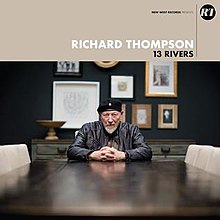 I’ve been a Richard Thompson fan for over 30 years, but have never seen him live until this past November, when he played the Egg in Albany, in support of this new album. The tour, and the album, are stripped-down affairs, featuring Thompson in an electric trio setting. And while some artists might suffer in that spare environment, Richard Thompson shines! He is often labelled as the ultimate musical triple threat; great singer, great player, and great writer, and those three skills are equally on display on this, his 25th studio album. The songs are rich in imagery and the production puts his distinctive voice and unparalleled guitar wizardry guitar front and center, much like his live show. At 69, Thompson still sounds contemporary and on top of his game!
I’ve been a Richard Thompson fan for over 30 years, but have never seen him live until this past November, when he played the Egg in Albany, in support of this new album. The tour, and the album, are stripped-down affairs, featuring Thompson in an electric trio setting. And while some artists might suffer in that spare environment, Richard Thompson shines! He is often labelled as the ultimate musical triple threat; great singer, great player, and great writer, and those three skills are equally on display on this, his 25th studio album. The songs are rich in imagery and the production puts his distinctive voice and unparalleled guitar wizardry guitar front and center, much like his live show. At 69, Thompson still sounds contemporary and on top of his game!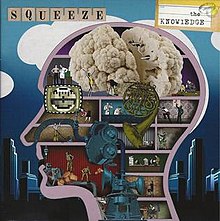 Given that I rank Squeeze’s Glen Tilbrook and Chris Difford number three, behind Lennon & McCartney, and John & Taupin, as England’s greatest songwriting teams, it will come as no surprise that I rate this, their 15th studio album, as one of the year’s best. After a layoff of nearly 20 years, they came back strong with 2016’s Cradle To The Grave, and follow that now with The Knowledge. Gone is the spunkiness of their late-70s records (Cool For Cats, Slap & Tickle, Up The Junction, etc), replaced here with a more mature, but still very original and artsy, form of Art Pop. This is songwriting at its best; with melodies that leap and surprise, chord changes that jar the ear (in a good way), and the most sophisticated lyrics this side of Elvis Costello!
Given that I rank Squeeze’s Glen Tilbrook and Chris Difford number three, behind Lennon & McCartney, and John & Taupin, as England’s greatest songwriting teams, it will come as no surprise that I rate this, their 15th studio album, as one of the year’s best. After a layoff of nearly 20 years, they came back strong with 2016’s Cradle To The Grave, and follow that now with The Knowledge. Gone is the spunkiness of their late-70s records (Cool For Cats, Slap & Tickle, Up The Junction, etc), replaced here with a more mature, but still very original and artsy, form of Art Pop. This is songwriting at its best; with melodies that leap and surprise, chord changes that jar the ear (in a good way), and the most sophisticated lyrics this side of Elvis Costello!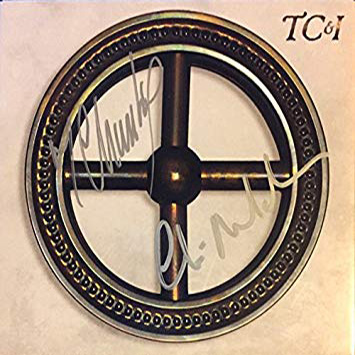 Being just a four-song EP, this one is cheating a bit. But my love for all things XTC runs so deep, that ANY music from them – in ANY form – after a nearly 20 year drought, is ample cause for celebration. TC & I, is drummer Terry Chambers, and bassist, singer/songwriter Colin Moulding, half of the original quartet that made up XTC. They joined forces just for the fun of making some new music again, and the results are sweetly triumphant! The opening track, Scatter Me, has all the charm and melody of classic mid-period XTC (Mummer, Skylarking). Both Moulding and Chambers sound in top form, and every track here brings smiles, and wishes for, as Oliver Twist would say, “More, please!”
Being just a four-song EP, this one is cheating a bit. But my love for all things XTC runs so deep, that ANY music from them – in ANY form – after a nearly 20 year drought, is ample cause for celebration. TC & I, is drummer Terry Chambers, and bassist, singer/songwriter Colin Moulding, half of the original quartet that made up XTC. They joined forces just for the fun of making some new music again, and the results are sweetly triumphant! The opening track, Scatter Me, has all the charm and melody of classic mid-period XTC (Mummer, Skylarking). Both Moulding and Chambers sound in top form, and every track here brings smiles, and wishes for, as Oliver Twist would say, “More, please!”